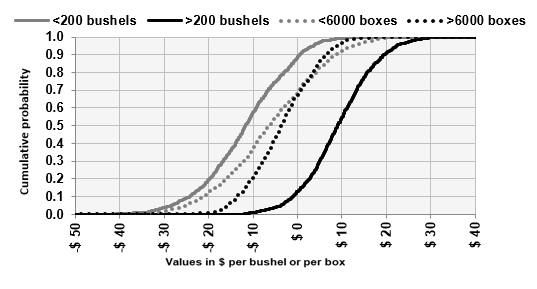ECONOMIC TRADE-OFFS AND RISK BETWEEN TRADITIONAL BOTTOM AND CONTAINER CULTURE OF OYSTERS ON MARYLAND FARMS
The traditional method of raising oysters in Maryland is to plant spat-on-shell directly on the seafloor area of the lease. Container culture, however, has grown rapidly in Maryland. There are clear economic trade-offs between the two production methods, but these trade-offs have not been evaluated with farm-level data. Maryland oyster farmers were interviewed in 2017 and 2018 to measure on-farm production and marketing costs for traditional bottom culture and container culture. Comparisons were made of: total initial investment (facilities, infrastructure, equipment), annual costs (major costs, cost structures, variable and fixed costs, and scale effects), profitability, marketing costs, and risk.
Cost structures differed substantially between the two production methods. For example, fuel was the greatest expense for traditional bottom culture farms whereas labor was the greatest expense for container culture farms. Producers using traditional bottom culture methods tended to use primarily unpaid owner/family labor. Container culture required greater investment capital and marketing costs with overall greater startup costs than did traditional bottom culture. Per farm, the most profitable scenario was that of the larger container culture farms, followed by the larger traditional bottom culture farms. Substantial profitability risk was found across production method/scales, but was generally greater on smaller-scale and container culture farms. Results demonstrate the importance of basing economic analyses on detailed farm-level data to capture the farm-to-farm variability and ensure that recommendations to producers are realistic.
